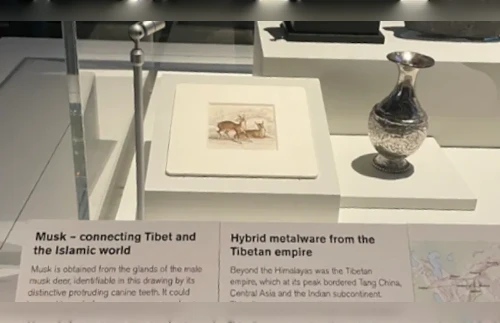The Article is an excerpt from RadioFreeEurope/RadioLiberty
Pete Baumgartner
The Kabardian horse’s strength and endurance were legendary as it carried Circassian warriors battling Imperial Russian forces in the high mountains of the Caucasus in the 1800s.
But the animal was in a dire situation as the U.S.S.R. collapsed in 1991, nearly vanishing into obscurity.

Now, breeders and animal registries suggest the Kabardian has been resurrected in its home region and is even flourishing in stables farther West. “At the fall of the Soviet Union, the breed was close to extinction,” Pawel Krawczyk, who has bred, trained, and raced Kabardian horses, tells RFE/RL.
Hundreds of animals from a dwindling population were being transported at the time to countries like Italy for meat, he says, “essentially to make sausage” — as the Soviet and then Russian breeding programs broke down amid the chaos.
Russian stud farms were soon left with “thousands of horses, no money to feed them, and expenses such as the salaries of the workers,” he says.
“It was a very difficult situation.”
The Kabardian — a sturdy, medium-sized horse usually entirely black, bay, or gray — has been bred by Circassian tribesmen in the mountainous northern Caucasus since at least the 1500s. The animal is renowned for its intelligence and obedience as well as its ability to endure harsh conditions and nearly unmatched stamina……
Its agility over narrow mountain passes and in frigid temperatures made the breed invaluable to Circassian resistance to Imperial Russia’s bids for control of the Caucasus in the 18th and 19th centuries.
‘Something Special About Them’

The Kabardian’s almost mythical stature made the breed’s near demise in the aftermath of the U.S.S.R. especially alarming for equine enthusiasts.
Tobias Knoll, a German expert on the breed who, like Krawczyk, helped lead a revival of Kabardians in Europe, puts their peak number in the Caucasus at around 100,000 animals….
Knoll says he happened across a lone Kabardian horse in Bavaria in 1996 and fell in love with the breed. He was later told they were rare and decided to breed them and establish a herd at his farm northeast of Munich.
“Why save another breed,” he asks, with hundreds of other breeds around the world? “There is something special about these horses which other horses lack — this needs to be preserved.”….
They are mainly used for riding, tourism, and endurance racing.
A robust network of horsemen breeds and trains Kabardians for competitions that test the animals’ and their riders’ endurance, where they compete admirably with Arabian horses……
Their racing success also helped promote the breed elsewhere in Europe, and small herds have arisen in Austria, the Czech Republic, France, Hungary, Slovakia, Spain, and Switzerland, Knoll says.
‘Symbol Of Our Freedom’
But crucially, breeders say, the Kabardian-horse population should be revived in their homeland of Kabardino-Balkaria, a tiny slice of rocky, verdant land that borders Georgia and is home to dozens of lakes and rivers as well as around half a million people.
The Caucasus region has been racked by eruptions of conflict and instability in the decades since the Soviet Union’s demise, some of it reflecting historic tensions between its southern Russian republics and central authorities in Moscow……
The local recovery effort has only taken hold in recent years, led largely by a relatively small number of breeders. Krawczyk says one of the results is that “a lot of rich people, oligarchs, businessmen” breed the horses and keep herds of hundreds of Kabardians.
Breeder Knoll puts the breed’s current numbers at between 10,000 and 12,000 in all of the Caucasus. “Here in Europe, we will not save the breed. It’s really there that we need to save the horses,” he says.
Copyright (c) 2018. RFE/RL, Inc. Reprinted with the permission of Radio Free Europe/Radio Liberty, 1201 Connecticut Ave NW, Ste 400, Washington DC 20036










